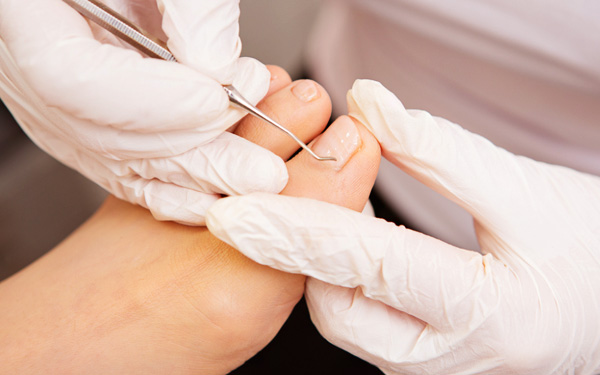Nail

Nail conditions refer to any abnormalities or problems that affect the nails, which are the hard, protective coverings on the ends of our fingers and toes. Nails can develop various issues, and here are some common nail conditions:
- Fungal Nail Infection (Onychomycosis This is a common nail condition where fungi infect the nails. It often causes the nails to become discolored, thickened, brittle, and may lead to pain or discomfort. Treatment options include antifungal medications, topical treatments, and sometimes surgical removal of the affected nail.
- Ingrown Toenails An ingrown toenail occurs when the edge of a toenail grows into the surrounding skin, leading to pain, redness, swelling, and sometimes infection. Treatment may involve soaking the foot in warm water, gently lifting the ingrown nail, or in more severe cases, surgical removal of part of the nail.
- Nail Psoriasis Psoriasis can affect not only the skin but also the nails. Nail psoriasis can cause pitting (small dents or depressions in the nails), ridges, discoloration, and even nail separation from the nail bed. Treatment may involve topical medications or systemic treatments to manage the underlying psoriasis.
- Brittle Nails: Brittle nails are characterized by nails that break, split, or peel easily. They can be caused by various factors, including aging, frequent exposure to water and chemicals, nutritional deficiencies, and certain medical conditions. Keeping nails moisturized and avoiding harsh chemicals can help prevent brittleness.
- Nail Discoloration: Nails can change color due to a variety of reasons, including fungal infections, trauma, and certain medications. Yellow or brown discoloration is common in fungal infections, while blue or black discoloration can result from injury or bleeding under the nail.
- Nail Trauma: Injuries to the nails, such as crushing, smashing, or jamming fingers or toes, can result in bruising, bleeding under the nail (subungual hematoma), or even permanent nail deformities. Immediate care may be necessary to address bleeding and prevent infection.